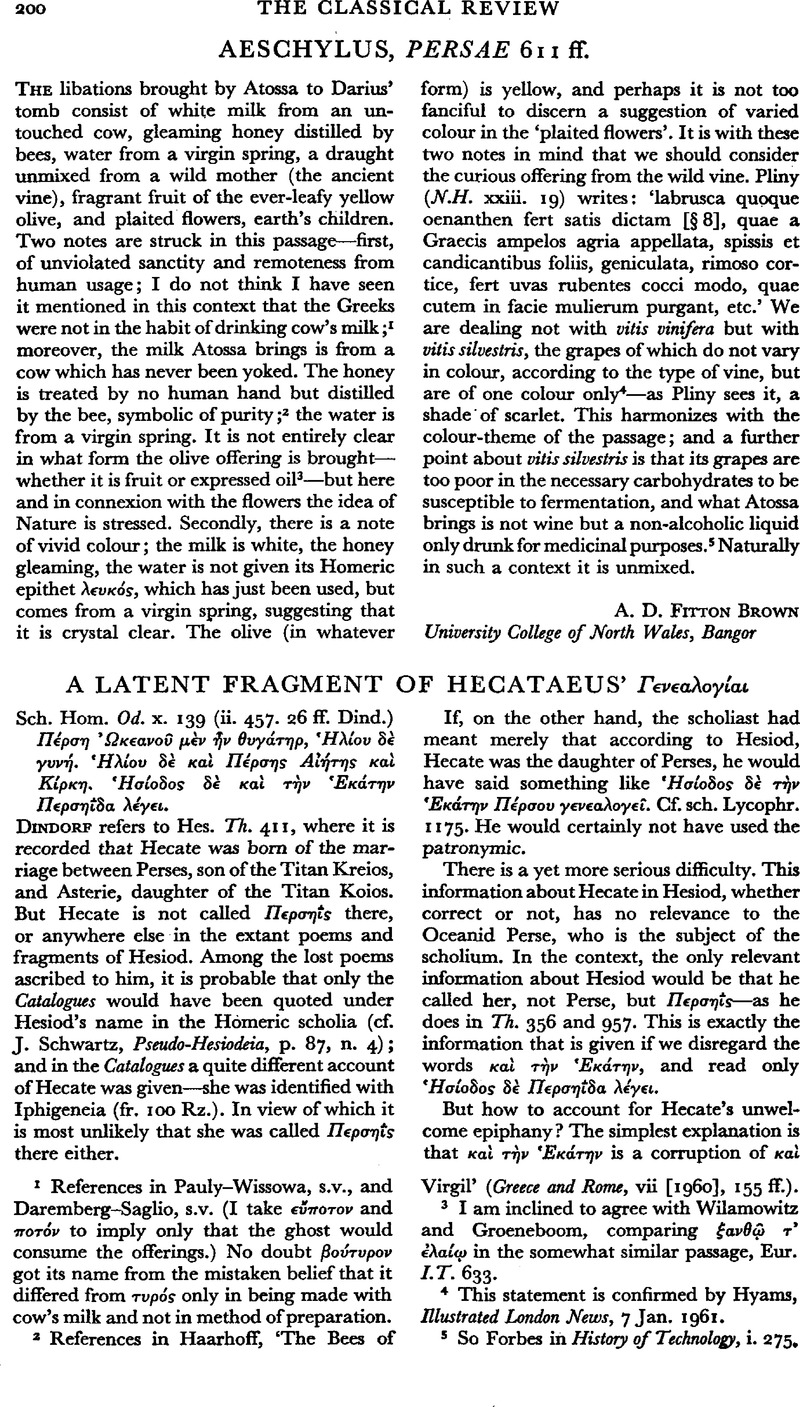No CrossRef data available.
Article contents
Aeschylus, Persae 611 ff
Published online by Cambridge University Press: 27 February 2009
Abstract

- Type
- Review Article
- Information
- Copyright
- Copyright © The Classical Association 1962
References
1 References in Pauly–Wissowa, s.v., and Daremberg–Saglio, s.v. (I take εὔποτον and ποτ⋯ν to imply only that the ghost would consume the offerings.) No doubt βο⋯τυρον got its name from the mistaken belief that it differed from τυρ⋯ς only in being made with cow's milk and not in method of preparation.
2 References in Haarhoff, , ‘The Bees of Virgil’ (Greece and Rome, vii [1960], 155 ff.)CrossRefGoogle Scholar.
3 I am inclined to agree with Wilamowitz and Groeneboom, comparing ξανθῷ τ' ⋯λα⋯ῳ in the somewhat similar passage, Eur. I.T. 633.
4 This statement is confirmed by Hyams, , Illustrated London News, 7 Jan. 1961.Google Scholar
5 So Forbes in History of Technology, i. 275.


